What Color Does Epsom Salt Turn Hydrangeas? Discover the Magic
Gardening enthusiasts often seek ways to enhance the beauty of their hydrangeas. One popular question is whether Epsom salt can change the color of these gorgeous flowers. Epsom salt does not change the color of hydrangeas. Instead, it offers other benefits, such as promoting healthy growth and vibrant leaves, making your garden look lush and well-tended.
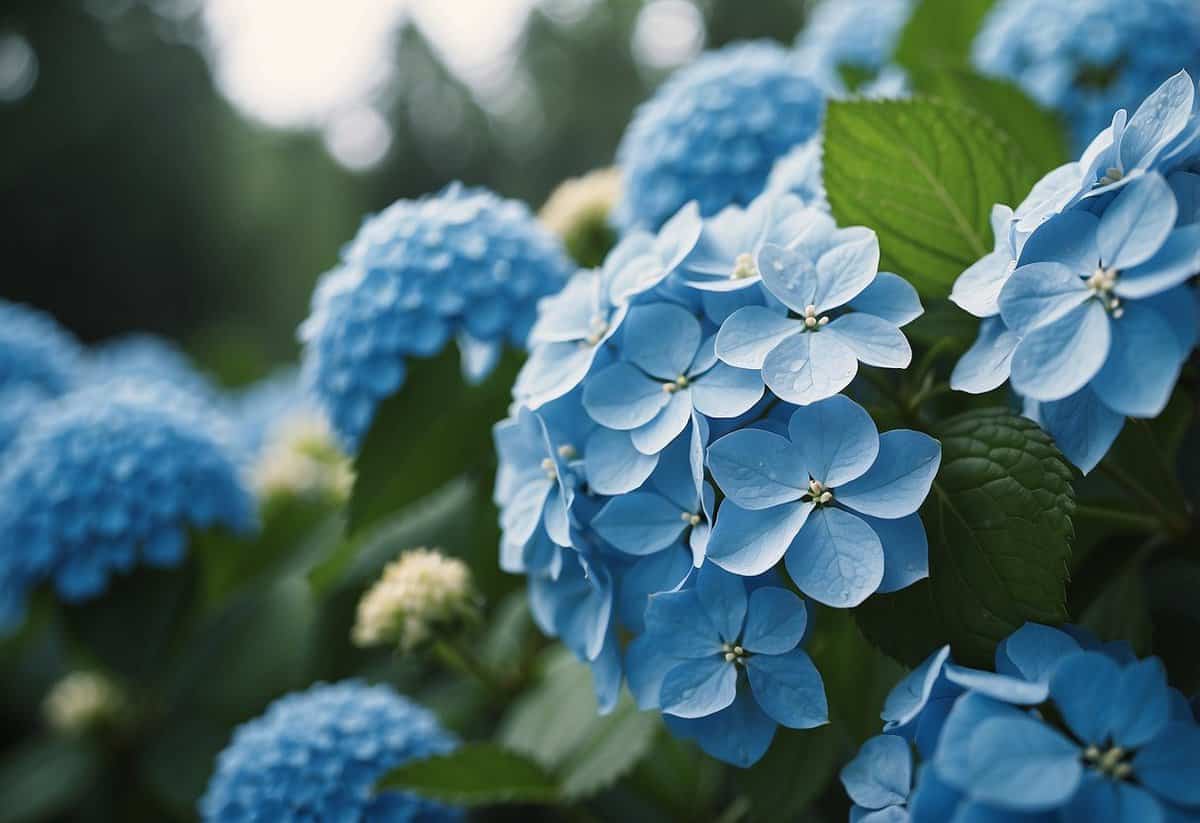
This might come as a surprise since many gardeners use various additives to tweak the colors of their hydrangeas. The color changes in hydrangeas are actually driven by the soil’s pH levels and the availability of aluminum. While Epsom salt, a combination of magnesium and sulfate, plays no role in color change, it helps prevent magnesium deficiency, which can cause yellowing leaves.
So, while Epsom salt won’t turn your hydrangeas’ blooms a different shade, it can still be a valuable addition to your garden care routine. It ensures your plants stay healthy and their foliage remains a rich green. For those looking to alter the color, you might want to explore other options that affect soil pH. Learn more at Epic Gardening.
Understanding Epsom Salt and Its Properties
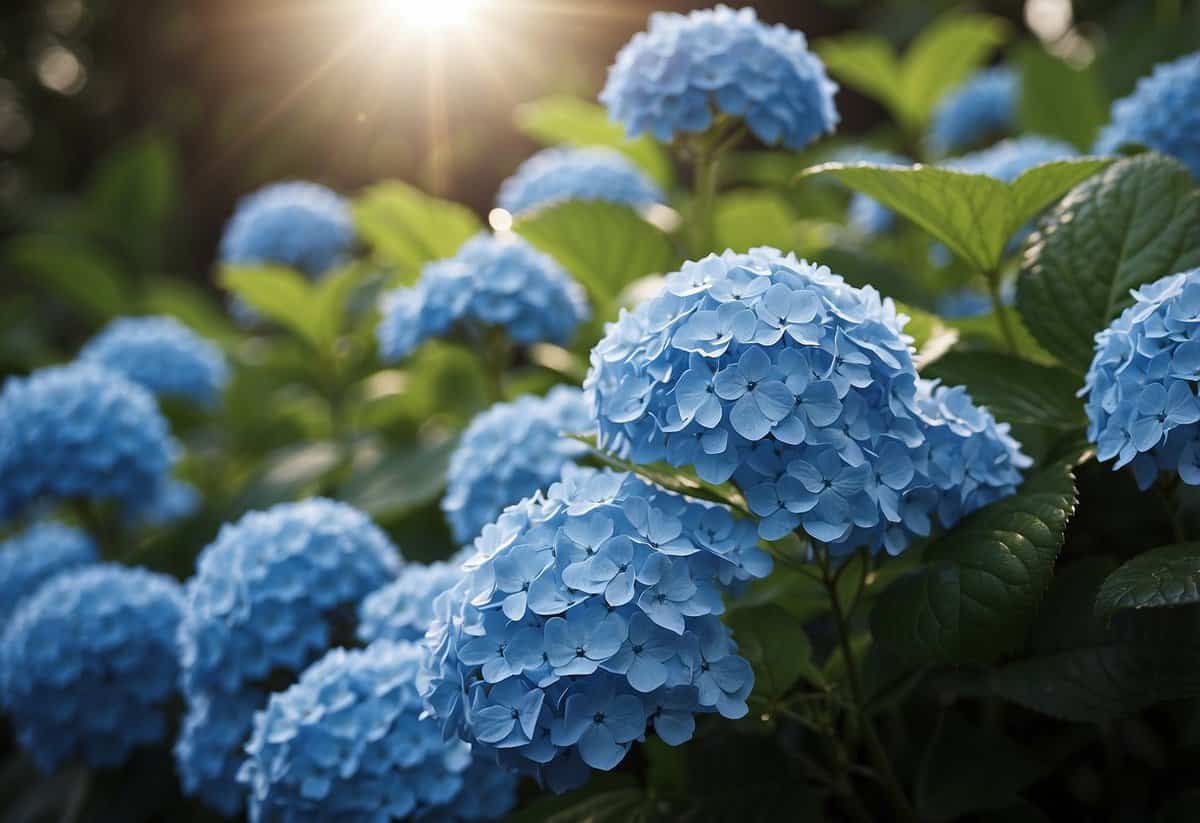
Epsom salt, also known as magnesium sulfate, plays a vital role in plant health. It provides essential nutrients for growth and can be used in different forms depending on your gardening needs.
The Role of Magnesium Sulfate
Magnesium sulfate is the chemical name for Epsom salt.
Magnesium is a critical nutrient for plants. It helps in photosynthesis by aiding the production of chlorophyll. Chlorophyll is what gives leaves their green color and is essential for converting sunlight into food for the plant.
Sulfate is another important component. It helps improve the absorption of other nutrients like nitrogen and potassium, which are vital for plant health.
By using Epsom salts in your garden, you provide your plants with magnesium and sulfate. This can lead to stronger cell walls, deeper green leaves, and overall healthier growth.
Different Forms of Epsom Salts
Epsom salts come in various forms that you can use based on your gardening needs:
Granules: These can be sprinkled around the base of your plants. They slowly dissolve and release magnesium and sulfate into the soil over time.
Liquid form: Epsom salts can be mixed with water and sprayed directly onto plant leaves. This method allows for quick absorption, especially if the plant shows signs of magnesium deficiency.
Crystals: These are often used in bath products but can also be applied to the garden.
Choosing the right form of Epsom salts can help you better manage how these nutrients are delivered to your plants. Different forms can be used for different scenarios, depending on whether you need a quick fix or long-term improvement.
The Science of Soil pH and Hydrangea Color

Hydrangeas can change color based on the pH level of the soil they are planted in. By adjusting the pH, you can influence whether the flowers are blue, pink, or somewhere in between.
How Soil pH Affects Hydrangea Color
The pH level of the soil determines the color of hydrangea blooms. Acidic soil (low pH) makes the soil more soluble, allowing hydrangeas to absorb aluminum more easily. When aluminum is available, the blooms turn blue. In alkaline soil (high pH), aluminum is less accessible, leading to pink blooms.
If the pH is neutral, you might see a mix of pink and blue flowers. White hydrangeas usually don’t change color with soil pH, as they are a different variety.
Adjusting Soil pH with Epsom Salt
Epsom salt contains magnesium sulfate. While it has many garden benefits, it does not significantly change soil pH. Therefore, Epsom salt does not directly affect hydrangea color.
However, if your hydrangeas need a boost in overall growth or flower quality, Epsom salt can help. For changing color, adding lime can raise the pH to turn flowers pink, while adding sulfur lowers the pH to turn them blue. Other amendments might be more effective for altering soil pH specifically for hydrangea color change.
Impacts of Epsom Salt on Hydrangea Health
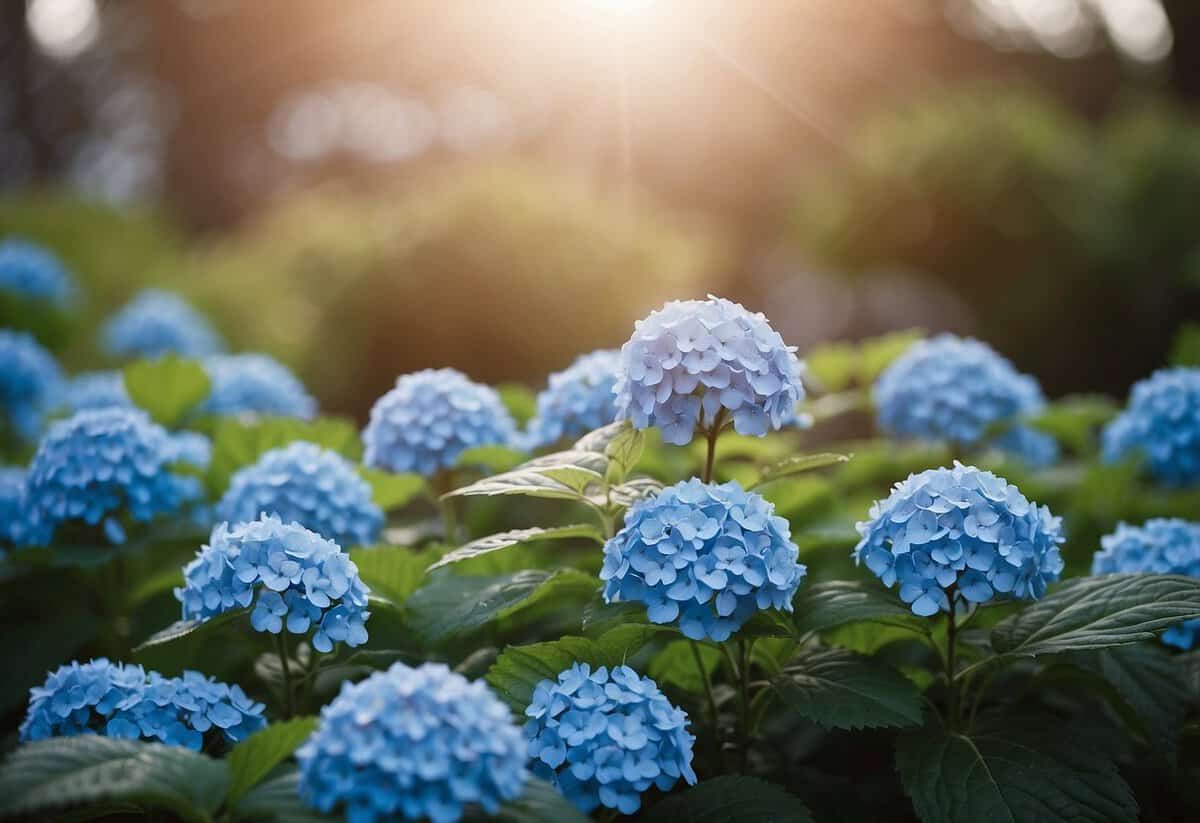
Epsom salt can benefit hydrangeas by providing essential nutrients and promoting stronger plant growth. It contains magnesium and sulfur, which are crucial for the plant’s health.
Nutritional Benefits for Hydrangeas
Epsom salt is primarily made of magnesium sulfate. Magnesium is important for chlorophyll production. This makes your hydrangea’s leaves more vibrant and green. Healthy leaves mean better photosynthesis, which helps the plant grow.
Sulfur in Epsom salt improves the plant’s protein production and enzyme activity. This helps your hydrangeas stay healthy and resist diseases.
It’s crucial to monitor your plant’s needs. While Epsom salt can provide these nutrients, overuse might lead to imbalances in the soil. Check your soil’s nutrient levels before adding supplements.
Epsom Salt for Stronger Plant Growth
Epsom salt promotes not only better color but also stronger growth. Magnesium helps in the development of strong cell walls. This makes your hydrangea more resilient to environmental stress like drought.
Regular use of Epsom salt can lead to more abundant blooms. Healthy roots absorb more nutrients and water, aiding in overall plant vitality.
Be careful with the dosage. Dissolve a tablespoon of Epsom salt in a gallon of water and apply to the soil monthly. Consistent usage is key, but avoid overapplication to maintain soil health. It’s always best to start with less and monitor your plant’s response.
Best Practices for Using Epsom Salt in Your Garden
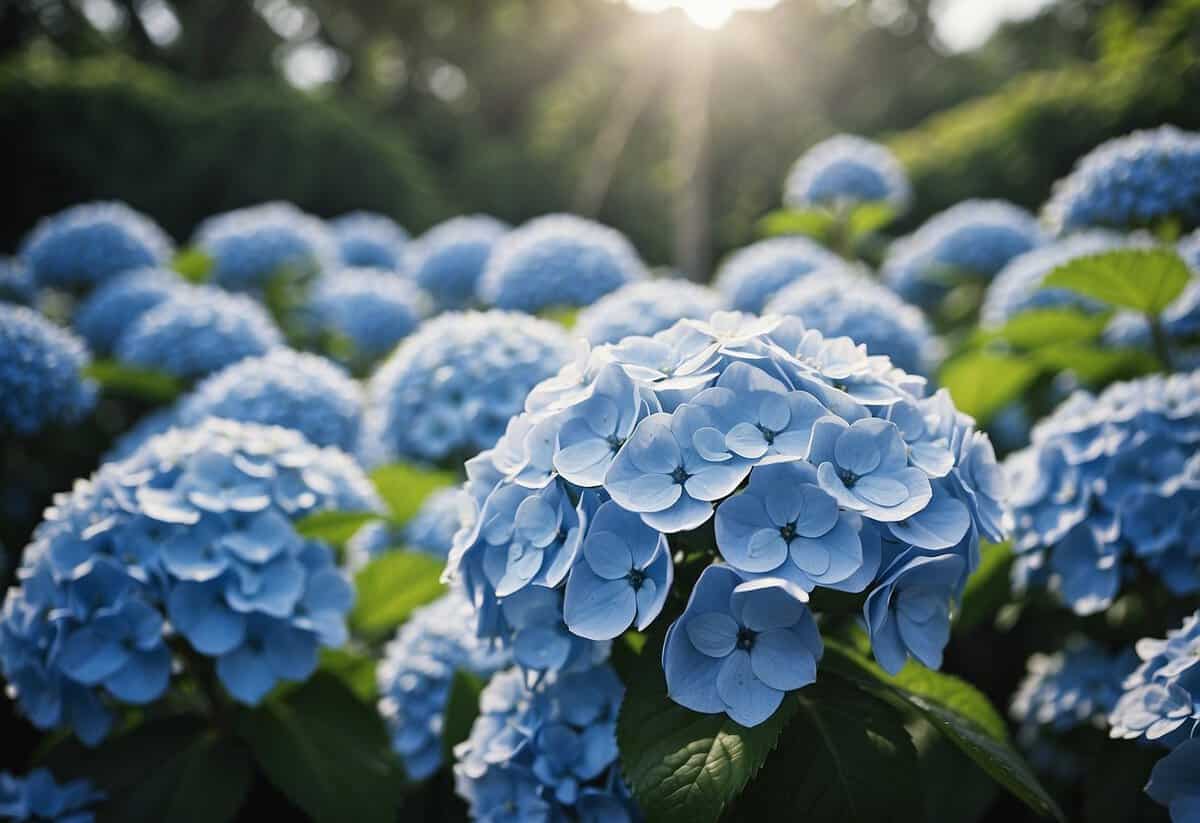
Using Epsom salt in your garden can boost plant health when done correctly. Ensure proper application techniques and avoid common errors to see the best results.
When and How to Apply Epsom Salt
- Mix Epsom salts with water before applying. Typically, dissolve one to two tablespoons per gallon of water.
- Watering: Apply this solution directly to the soil around your plants or use a spray bottle to mist the leaves. For flowering plants, consider spraying once a month.
- Germination: Add a tablespoon of Epsom salts to a gallon of water and use this mixture when watering seeds to aid germination.
- Enhance Essential Nutrients: For shrubs and evergreens, spread one tablespoon per 9 square feet of soil over the root zone every few weeks.
Avoiding Common Mistakes
- Moderation: Using too much Epsom salt can harm plants. Stick to recommended amounts to avoid nutrient imbalances.
- Soil Test: Not all soil needs extra magnesium. Test your soil before deciding to use Epsom salt to ensure it provides the right benefits.
- Care Routine: Include Epsom salt as part of a broader fertilizing and watering routine. Combine it with other good practices, such as using compost and balanced fertilizers, for a healthy garden.
- Never apply dry Epsom salt directly to plants as it may cause leaf burn or other damage. Always dissolve it in water first.
Proper use of Epsom salt can enhance your plants and ensure a vibrant garden.
Enhancing Blooms and Color Vibrancy with Epsom Salt
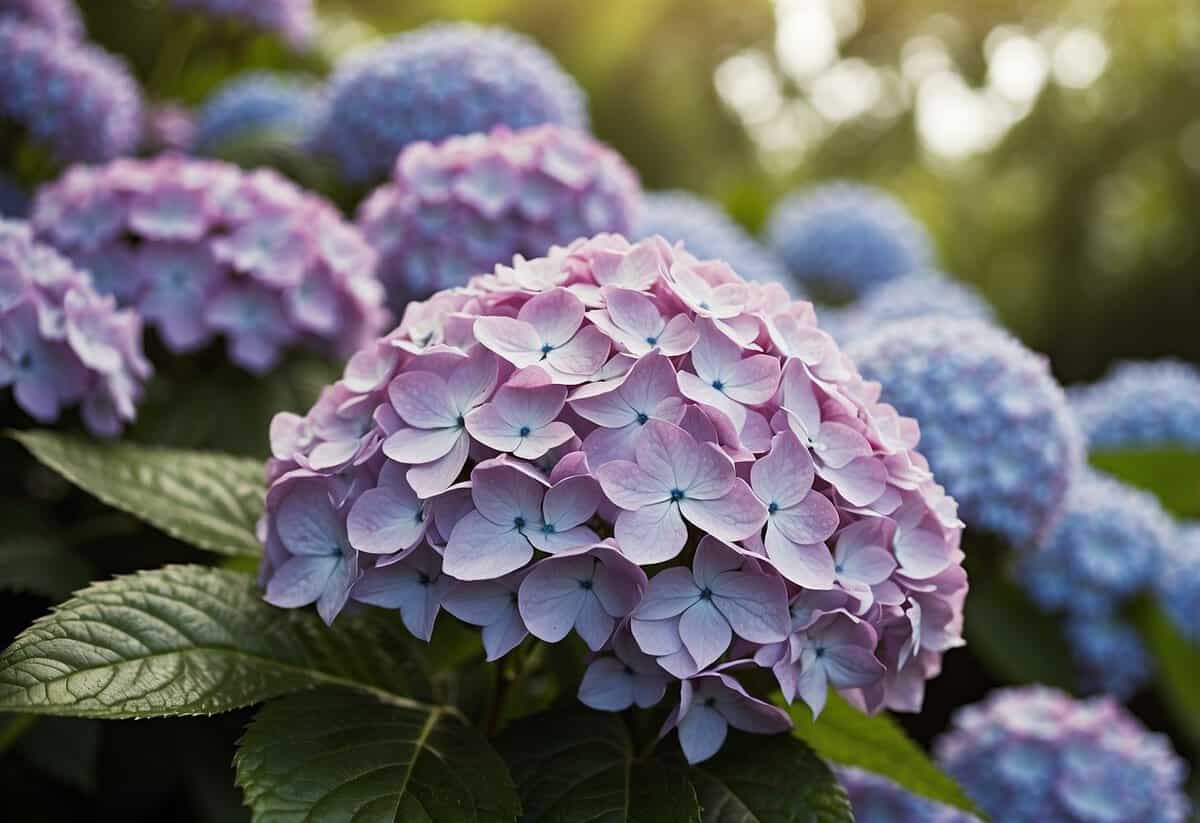
Enhancing the color and vibrancy of your hydrangeas is possible with Epsom salt. It helps improve photosynthesis and nutrient uptake, which results in more vibrant blooms.
Promoting Vibrant and Healthy Blooms
Epsom salt, or magnesium sulfate, plays a crucial role in plant health. Magnesium is a central element in chlorophyll, the pigment essential for photosynthesis. When hydrangeas absorb more magnesium, they can produce more vibrant blooms.
To use Epsom salt to enhance your hydrangea blooms, dissolve 1 to 2 tablespoons in a gallon of water. Apply this solution once a month. It helps in the absorption of sunlight and nutrients, boosting the health and vibrancy of the flowers.
Healthy blooms are not only more vibrant but also more resistant to diseases. Regularly feeding your plants with Epsom salt ensures they have the necessary nutrients to thrive. Remember, while it helps with vibrancy, the soil pH will still determine whether the blooms are blue or pink.
Methods to Boost Flower Color Intensity
For more vibrant blue flowers, Epsom salt can be combined with soil acidifiers. Blue hydrangeas prefer acidic soil. Mix Epsom salt with water as mentioned before and apply it to the soil. For even better results, you might also incorporate some pine needles or coffee grounds around the base of the plant.
If you desire pink flowers, you need to make the soil more alkaline. Adding lime to the soil does this. In this case, Epsom salt still helps by ensuring that your hydrangeas have the necessary nutrients to maintain their vibrant color intensity.
Using Epsom salt regularly ensures that your hydrangeas look their best. It enhances the flower color intensity by improving the plant’s ability to absorb necessary nutrients like sunlight and water. This leads to more vibrant and healthy blooms that you will enjoy throughout the flowering season.







